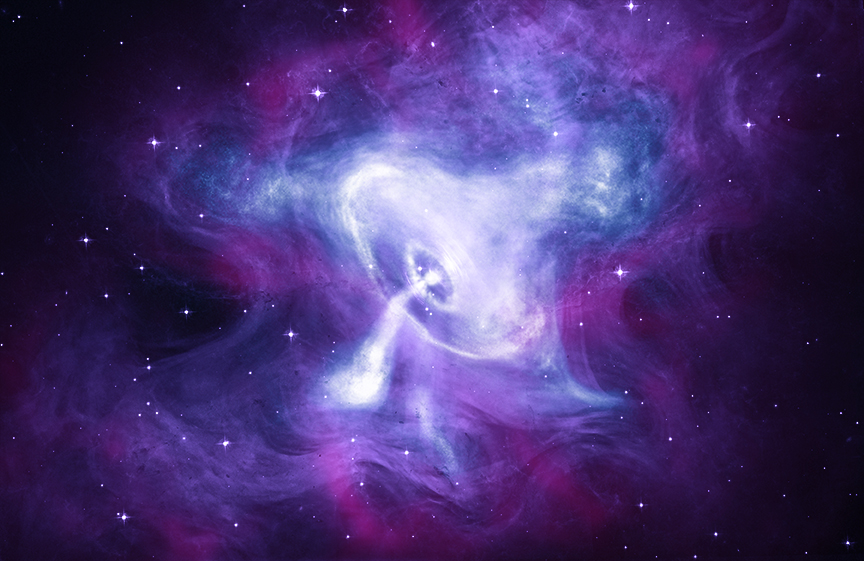
 Credit: -ray: NASA/CXC/SAO; Optical: NASA/STScI; Infrared: NASA-JPL-Caltech
Credit: -ray: NASA/CXC/SAO; Optical: NASA/STScI; Infrared: NASA-JPL-Caltech
Multicolor Crab
The Crab
Nebula, Messier 1, is the remnant of a stellar explosion
that was seen by Chinese astronomers in AD 1054, on the fourth of July.
The remnant was first called the "Crab" after a poor drawing of the Nebula by William Parsons, the Third Earl of Rosse, which showed a suspiciously crab-like morphology. The image above shows a new high-resolution multiwavelength image of the nebula, which, admittedly, is quite a bit different from Lord Rosse's drawing. This composite image shows in astounding detail the shape of the ionized gas and dust ejected by or produced in the explosion. It also shows in detail the ongoing interaction between this material and the highly-magnetized pulsar at the center of the nebula. This pulsar is a rapidly spinning neutron star, the compressed core of the massive star which ran out of nuclear fuel, collapsed, and exploded. This image above shows X-ray emission in blue and white (as seen by the Chandra X-ray Observatory), an optical image in purple (from the Hubble Space Telescope), and an infrared image in pink from the Spitzer Space Telescope. The Crab is a favorite source of high-energy astrophysicists especially, since X-ray and Gamma-ray emission produced by the pulsar and in the nebula provides an important example of how stars explode and how their remnants evolve. It is also a bright, extended, steady source, and is an important object for calibrating high energy satellite telescopes. Although it's usually a steady source of emission, sometimes the Crab misbehaves.
Published: March 19, 2018
<
HEA Dictionary ● Archive
● Search HEAPOW
● Other Languages
● HEAPOW on Facebook
● Download all Images
● Education ● HEAD
>

Each week the HEASARC
brings you new, exciting and beautiful images from X-ray and Gamma ray
astronomy. Check back each week and be sure to check out the HEAPOW archive!
Page Author: Dr. Michael F. Corcoran
Last modified Monday, 26-Feb-2024 17:45:06 EST


